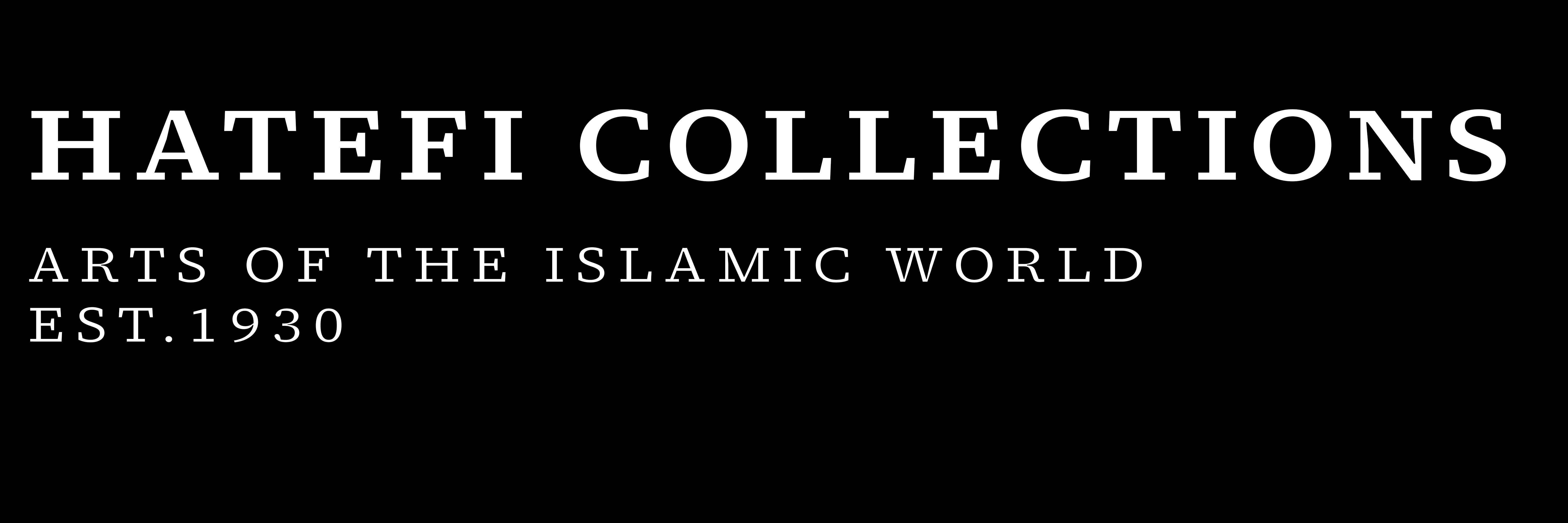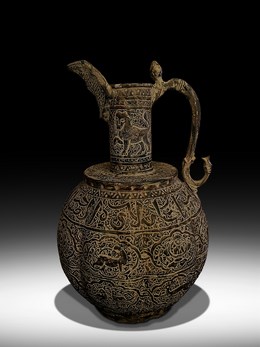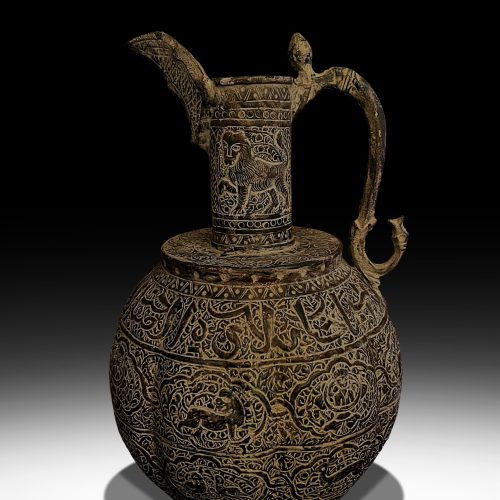DESCRIPTION: | Of globular fluted body on circular foot-ring, tall contracting neck with seated Lion upward-pointing half-open high spout, a straight flat handle attached to the body, filled with motifs and hunting scene and Quranic inscription.Additionally, of the sixteen flutes, four have flattened surfaces with elaborate decoration including palmettes and Kufic inscriptions, four with pole medallions. |
|---|
FOOTNOTE: | This magnificent ewer, which is cast in bronze, relates to a number of others with either a globular or a fluted body. They all have upward pointing beak like spouts and lugs on the side of the neck for attachment of rings. The group can be dated through comparison with lustre pottery of similar form, datable to the second half of the 12th Century (for example Watson, Oliver, Persian Lustre Ware, London, 1985, fig. 45). For another comparison in the Keir Collection, see, Fehérvári, Islamic Metalwork of the Eighth to the Fifteenth Century in the Keir Collection, London, 1976, pl. 15, no. 51. A similar ewer was sold at Sotheby’s, Arts of the Islamic World, 13th April 2000, lot 64. |
|---|






